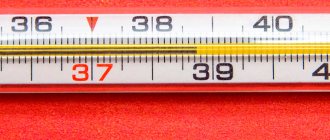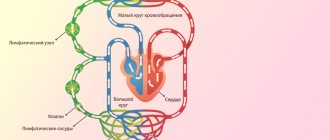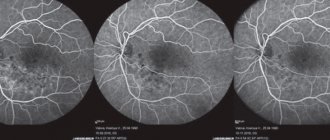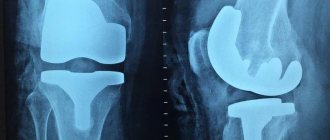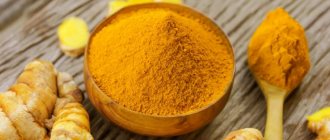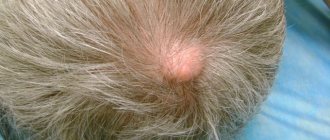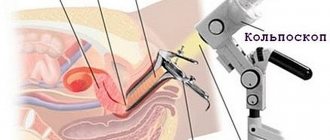Heat therapy is one of the popular areas in physiotherapy, the essence of which is the effect of different heat carriers on the human body. Thanks to this, local blood circulation is stimulated, tissue elasticity is improved, inflammatory processes and pathological foci are suppressed. Paraffin and ozokerite are excellent for relieving muscle spasms, reducing pain, and activating blood flow to the joint cavities.
Properties of paraffin and ozokerite
The first substance belongs to the category of synthetic, obtained during the process of petroleum distillation. Its significant advantage is its excellent heat capacity and low thermal conductivity. When the skin is slowly and evenly heated, and then when the skin is compressed, the following effects occur:
— Suppression of pain, discomfort and other unpleasant sensations.
— Increasing the elasticity of the skin, tendon and muscle elasticity.
— Improving blood circulation and lymphatic drainage.
— Acceleration of regenerative processes in tissue.
Ozokerite, in turn, is a natural mountain resin. It combines all the properties listed above, but additionally has a chemical effect on the body. The composition of this substance includes minerals, gas molecules and natural antibiotics. When applied to the skin, the following effects occur:
— Restoration of damaged tissues.
— Acceleration of regeneration and healing of backpack surfaces.
— Inhibition of inflammation, relief of spasm.
- Dilation of blood vessels.
— Strengthening immune defense.
— Relieving itching, soreness and other unpleasant sensations on the skin.
— Suppression of local allergic reaction.
- Absorbing action.
The benefits of paraffin therapy
The main healing properties of paraffin applications include:
- Compression effect. After hardening, paraffin decreases in volume by approximately 10% - this property indicates a tightening effect; tissue lymph flow is enhanced due to compression.
- Metabolism accelerates, which promotes the rapid removal of harmful substances from the body.
- Anti-inflammatory effect. The lingering and spreading heat deep into the layers of the human body contributes to the rapid relief of painful sensations and the healing of the body, both mono and complex. Paraffin therapy is widely used for the treatment of joints, restoration of muscle tone, for fractures, acute respiratory viral infections and acute respiratory infections, and therapy of internal organs.
- Skin renewal (rejuvenation, resorption of scars and scars).
How it works?
The ozokerite treatment process is based on the irritating effect that the heat carrier has on skin receptors. According to medical data, with an increase in skin temperature by only 1˚C, the rate of metabolic processes in the body increases by about 10%. If you increase the temperature of the skin by 4-5˚C, this produces a noticeable healing effect.
At the same time, it is very important that the thermal effect is uniform and long, which places certain demands on the coolant. Ozokerite has all the necessary properties, which at the same time enriches the body with useful biologically active substances. In addition, ozokerite has a slight compressive effect on the skin (compression when hardening), which helps deeper penetration of healing heat.
The features of “mountain wax” that allow it to be used in heat therapy are low thermal conductivity and significant heat capacity. After applying ozokerite to the skin, a thin layer of coolant instantly appears on it, having a temperature close to the skin temperature. Due to the unique properties of ozokerite, heat is transferred from the upper layers of the coolant to the lower ones very slowly. This allows you to use ozokerite at temperatures up to 60-70˚C for long sessions without causing burns.
Types of paraffin applications
There are several types of procedures, each of which differs in the method of influence and complex properties.
- Cuvette-application;
- Napkin appliqué;
- Layering;
- Paraffin Bath;
- Paraffin-ozokerite;
- Cosmetology;
- Procedures for children.
The cuvette-application method is based on the use of a special container: a cuvette. Melted paraffin is poured onto the bottom of the cuvette, where the oilcloth has already been placed. The cooled but still soft material is removed from the container and placed on the target area of the patient’s body. Cover with a blanket on top.
The napkin-application method involves the use of gauze towels soaked in paraffin. This method is convenient when the area of the body being treated is large.
Layering of the paraffin mass is done using a brush and is used when small areas are treated
Paraffin baths are used to treat the hands or feet. Pre-treated feet or hands are wrapped in film with layered paraffin and lowered into baths filled with heated paraffin.
The procedure is also used in urology and gynecology.
The paraffin-ozokerite method is based on the use of natural material ozokerite. Such applications allow you to relieve inflammation and quickly restore tissue.
For cosmetic purposes, paraffin applications are used for the hands and face. Thanks to their healing properties, paraffin masks and baths smooth the skin, relieve dryness and flaking, eliminate signs of aging, remove waste and toxins, and accelerate blood flow. Paraffin wraps relieve the skin of cellulite, and also bring visible changes in the resorption of scars and scars.
Paraffin therapy for children is widely used in the treatment of acute respiratory infections and acute respiratory viral infections. Thanks to the warmth that lasts for a long time, these unique paraffin boots help to cope with frequent respiratory diseases.
Ozokerite (paraffin therapy)
Ozokerite is a waxy mass from dark brown to black in color - a substance of petroleum origin. Ozokerite contains paraffin, mineral oils, resins and other substances. To free it from foreign inclusions, raw ozokerite is melted and washed with water, and then with acid, and bleached with special bleaching clay (Fuller's earth). Commercial ozokerite is black, green, yellow or white, depending on the degree of bleaching. Purified ozokerite melts at a higher temperature (65°C to 80°C) than paraffin; it consists almost entirely of high molecular weight hydrocarbons. Acids and alkalis have no effect on ozokerite. It holds oils and other additives firmly. Ozokerite is insoluble in volatile alcohols, but soluble in benzene, kerosene and other hydrocarbons.
The term "ozokerite" was first proposed by Glocker in 1833. The first chemical analysis of ozokerite was carried out by the famous French chemist Walter in Paris in 1840.
Clinical experience with the use of ozokerite indicates that the most favorable results are achieved when treating inflammatory and metabolic-dystrophic diseases. Ozokerite applications have a positive effect on inflammatory processes, accelerate recovery processes, increase immune parameters, normalize the tone of the autonomic nervous system, and stimulate blood circulation. The inclusion of ozokerite applications in the treatment complex increases the effectiveness of spa therapy in the treatment of pathologies of the digestive system, urination and metabolism.
The effect of ozokerite on the body consists of temperature, mechanical and chemical factors. In addition, the numerous chemical components of ozokerite and the possibility of their penetration through the skin cause significant changes in the overall reactivity of the body.
Ozokerite is characterized by very low thermal conductivity, high heat capacity and heat-retaining ability. Convection heat transfer in ozokerite is weakly expressed, therefore, when it is applied to the skin, a layer quickly forms, the temperature of which is close to the skin temperature, and the transfer of heat to the body from the overlying layers occurs very slowly. This makes it possible to use ozokerite at high temperatures (60-70 C) without fear of causing a burn.
The mechanical factor of the action of ozokerite is due to its ability, when solidified, to decrease in volume by 10-12%, which is accompanied by slight compression of the underlying tissues (compression effect). This promotes deeper distribution of heat. The compression effect of ozokerite is most pronounced during circular applications, when an area of the body is covered from all sides, for example, on the extremities, while tissue swelling is reduced, because due to the thermal effect, the outflow of tissue fluid and lymph improves.
The chemical effect of ozokerite is due to the presence of biologically active substances in it (having an estrogen-like, acetylcholine-like effect) that can penetrate through intact skin into the body and, entering the humoral channel, cause a parasympathicotonic effect. Ozokerite also contains substances with antibiotic properties. It has been established that ozokerite can have an anti-inflammatory, absorbable, analgesic, antispastic, desensitizing effect, and stimulates regeneration processes.
Indications for use of ozokerite
Diseases of the joints and spine of a dystrophic and inflammatory nature in the acute or chronic stage; consequences of damage to the musculoskeletal system; diseases and injuries of peripheral nerves and spinal cord; diseases of internal organs (chronic pneumonia, pleurisy, hepatitis, cholecystitis, gastritis, colitis, peptic ulcer of the stomach and duodenum); chronic and subacute inflammatory diseases of the female genital area, secondary infertility; chronic inflammatory diseases of the ear, nose and throat; skin diseases; diseases of peripheral vessels of the extremities in the initial stages, chronic. thrombophlebitis.
Technique of procedures
Ozokerite is heated to the required temperature in electric paraffin heaters or in a water bath. Sterilization of used ozokerite is carried out by heating in a water bath to a temperature of 100 degrees for 10-15 minutes. When reusing ozokerite, 25% of the unused substance is added to it.
There are several ways to use ozokerite:
- layering (molten ozokerite t 65-70 C is applied to the skin with a brush);
- ozokerite baths (the limb is coated with ozokerite, and then immersed in a vessel with molten ozokerite at 60-70 C;
- napkin-application (gauze folded in 8-10 layers is immersed in molten ozokerite t 50-55 C, wrung out and applied to the site of treatment, covered with oilcloth, and then with a blanket or quilted pad);
- cuvette-application (molten ozokerite in a layer 1.5-2 cm thick is poured into cuvettes, frozen ozokerite t 48-50-54 C is removed from the cuvette onto an oilcloth and applied together with it to the areas to be exposed).
The latter technique is most often used in practice.
Ozokerite is also used for abdominal treatment in the form of rectal and vaginal tampons at a temperature of 55-60 C. The choice of treatment method is determined by the form of the disease, the localization of the process, the phase and stage of the disease. Usually the procedures are carried out daily or every other day, the duration of the procedure is from 15 to 30-40 minutes, the course of treatment is 10-20 procedures. After the procedure you should rest for 30-40 minutes.
Treatment courses can be repeated at intervals of at least 3-4 months. Ozokerite can be combined (alternating procedures) with galvanization or electrophoresis, ultrasound therapy, light therapy, massage, physical therapy, and general mineral baths. The intervals between ozokerite treatment and one of the listed procedures should be at least 1-2 hours. For the elderly and children, ozokerite is heated to a lower temperature (48-52 C); The duration of the procedure is reduced to 15-20 minutes. In children's practice, preference is given to the napkin-application method (napkins are moistened with ozokerite temperature 48-49 C and a compress is applied).
The use of ozokerite is contraindicated in feverish conditions, decompensation of the cardiovascular system, acute and subacute heart diseases, severe forms, hypertension, emphysema, bronchial asthma, dystrophies, tuberculosis, benign and malignant tumors, a tendency to bleeding, blood diseases, callous and prone to to penetration of stomach and duodenal ulcers, ulcerative enterocolitis, severe liver diseases, gangrenous forms of obliterating endarteritis, acute and subacute thrombophlebitis, thyrotoxicosis, epilepsy, with suppurative processes in the pelvic organs, during pregnancy.
Storage: at a temperature not higher than + 25 C.
Application of paraffin in medicine
Paraffin applications and wraps are widely used in medicine and cosmetology. Due to its beneficial properties, paraffin is used to treat various types of diseases. For example, the procedure is used for bone fractures for rapid healing of injury, for ruptured ligaments, neuralgic disorders, chronic bronchitis and pneumonia, for adhesions after operations, for the treatment of female gynecological diseases, and for skin diseases of almost any nature.
Practicing cosmetologists and numerous beauty salons use paraffin to maintain youth and turgor of the skin of their clients, as well as to combat cellulite on the thighs, buttocks and abdomen.
Indications for paraffin-ozokerite treatment
Ozocerite therapy and paraffin therapy are prescribed for a large number of diseases. A wide range of indications is associated with a painless procedure, absence of side effects and minimal contraindications. These medical procedures show excellent results and accelerated the healing process. As a rule, they are an auxiliary element of the main treatment, and therefore are not used as the only and fundamental therapy. Procedures are strongly recommended for:
— Diseases of the musculoskeletal system (rheumatoid arthritis, arthrosis, previous injuries: tendon ruptures, fractures, etc.).
— Rehabilitation after surgery. Paraffin-ozokerite applications for children and adults stimulate regenerative processes, due to which recovery after surgery occurs much faster.
— Skin diseases (burns, frostbite, long-term non-healing wounds, etc.).
— Active inflammatory processes of different localization (pneumonia, trophic ulcers, dermatitis and much more).
— Damage to the peripheral nervous system (sciatica, neuralgia, etc.).
- Prolonged immobilization of the limbs. In this case, paraffin wax applied locally to the damaged area of the body is very effective.
- Contractures.
- Stagnation of blood and lymph. The application improves lymph and blood flow, helping to eliminate swelling and heaviness.


